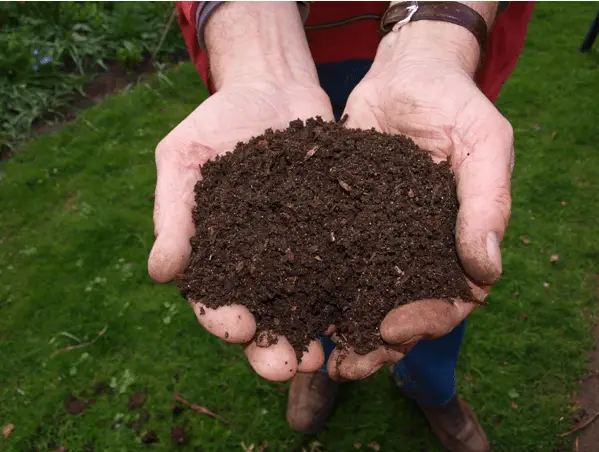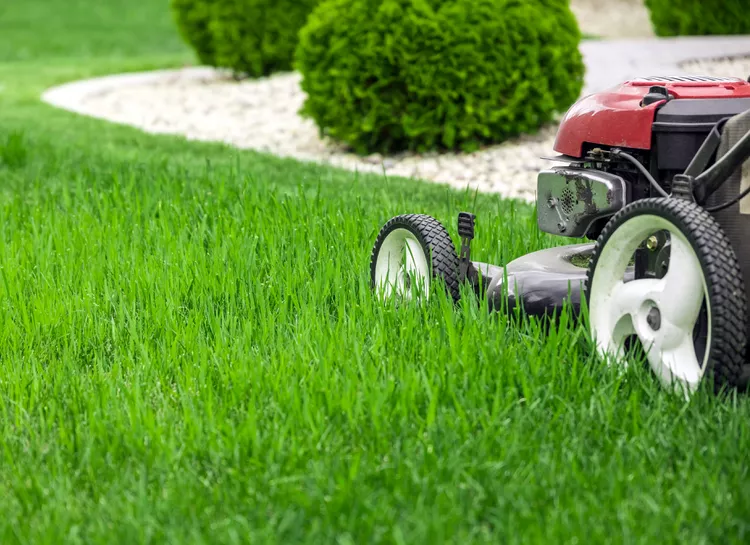Best Practices When Using Spring Lawn Feed
Last Updated on March 31, 2025 by Duncan
When your lawn awakens from its winter dormancy, it will be hungry. Make sure you have sufficient of spring lawn feed on hand to get the growth season off to a great start.
When you are looking to buy your spring lawn feed you should pay attention to a number of factors. As a rule of thumb, buy lawn feed with these features:
- A balanced nutritional profile. In the spring, your lawn requires plenty of nitrogen, phosphorus, and potassium.
- Slow-release formula. To avoid having to remember to feed frequently, search for a lawn feed that will last around three months.
- Granulated fertilizer is much easier to apply uniformly than dusty or dissolvable feeds.
- Waterproof packing may seem absurd, but lawn feed can collect moisture from the air and becoming lumpy, hard, and worthless. So, it’s vital that you ensure that your lawn feed has a secure packaging.
- Reliable supply at a reasonable cost
Ingredients to lookout for when buying spring lawn feed
Nitrogen
Nitrogen is used by plants to make the proteins and enzymes necessary for cell division and a healthy metabolism. Because rainy weather tends to wash nitrogen out of the soil, ground reserves will be low in the early spring.
The leaves will be greener and more resilient to damage from feet and/or lawn diseases when grass plants have access to a healthy supply of nitrogen.
Potassium
An essential plant nutrient. Potassium improves water efficiency and builds a strong immune system. Your grass should be more resilient to common diseases and able to withstand drought when potassium levels are high.
Phosphorus
The grass roots are made tougher by phosphorus. It strengthens cell walls and promotes root growth, increasing the amount of water and nutrients that roots can absorb.
Best practices when using spring lawn feed
Feed your lawn before problems arise
As with most living things, nutrition is best used to prevent issues rather than to treat them
Plant health will significantly improve by replenishing the soil with nutrients in the early spring that have been washed away by winter weather.
Use slow release lawn feed
You should note that having a gradual release formula is beneficial. This means you shouldn’t feed the lawn after each cut. Instead, you should apply a feed every twelve weeks.
This is vital if you have good soil in your garden, with plenty of organic matter in it. If yours is sandy or particularly chalky, consider feeding it every 8 weeks because nutrients quickly wash through.
Use granulated spring lawn feed
Lawn feed comes in a variety of formats. Lawn sand is a traditional type of feed and soil improver, but it is heavy and difficult to handle.
You should purchase liquid feed and apply it using a watering can or hose attachment. Alternatively, you can buy a powdered feed. Neither of these are easy to apply evenly, and it is critical to get level coverage.
Uneven application of lawn feed might result in an uneven appearance. And you don’t want this. If you apply too much at once, it can severely damage your lawn. Too little, and you’ll see pale, yellowy green spots.
Buy from a trusted supplier
It’s crucial that you have faith in your provider. After all, you can’t see the individual ingredients when you open your spring lawn feed package.
Due to this, you should ensure that the supplier you work with is reputable and knows what they are doing.
If you know you’ll use the entire pack at once, paper cartons are acceptable. However, if you know that you will be left with some, ensure that your supplier has waterproof packaging.
The reason for this is that plant feed has a tendency to absorb water from the air and can become a large, solid lump that is useless. And you don’t want this, do you?
How do you feed your lawn?
You can use a lawn spreader to apply granulated lawn feed. For information on amounts, consult the label. Avoid applying more feed than is recommended since this may cause the grass to burn.
Generally speaking, you should use fertilizer when the weather is favorable and the soil is moist but the grass is dry.
After applying the feed, thoroughly water the lawn. Children and pets can safely re-use the grass after the product has dried. In general, granulated products are less expensive than liquid feeds and this makes them ideal for big gardens.
Liquid feeds are perfect for small gardens and you can apply them using a watering can with a sprinkler bar. They typically generate faster results than granulated feeds.
For the best outcome, follow the dilution rate instructions carefully, since using an overly concentrated feed might cause the grass to burn. As with granular feeds, keep youngsters and dogs off the grass until it has dried.
Ensure your timing is right
When applying lawn feed you must be wondering what is the best time to make the application, right? For the best outcome, wait until after your first spring mowing to fertilize your lawn. Additionally, make sure to fully water your yard a day or so prior.
Once the lawn is entirely dry, it’s time to start fertilizing.
You should remember that whether you’re new to lawn care or this is your first time fertilizing your own yard, there will be a learning curve. What is the greatest way to determine your success? Look at your lawn.
Your optimal grass color is most likely a light green, and over- or under-fertilization will cause color changes.
Think about post fertilization
Once you’ve applied the fertilizer, chosen the appropriate schedule, and completed the dirty task, you’ll need to begin the post-fertilization treatment. That’s correct.
The hard work does not stop once you’ve loaded the hopper and spread the fertilizer; there is much more to be done to ensure that your fertilization procedure sticks and performs what it should.
For starters, make sure you water your lawn after you’ve applied fertilizer.
A light watering is sufficient, but if you ignore this step, you will miss out on the critical process of washing the fertilizer off the grass blades and soil.
That being said, if there is likely to be a strong storm or a lot of rain in the coming days, forgo watering; the grass will get adequate hydration.
If you know about the storm before you fertilize, you should wait because a storm will most likely wash the fertilizer into storm drains and streams (a bad outcome for both your grass and the ecosystem).
FAQs
When is the ideal time of year to feed your lawn?
Spring and autumn are the most crucial periods to fertilize your grass. A nitrogen-rich spring lawn feed will promote the growth of a healthy, lush green grass in preparation for the summer season.
An autumn lawn feed heavy in potash promotes strong root growth and hardens the grass for winter.
What is the distinction between spring and fall lawn feeds?
Spring lawn feeds are heavy in nitrogen, which promotes the growth of lush green lawns. Autumn lawn feeds are strong in potassium and phosphates, which promote root growth and harden the grass for the winter.
They contain less nitrogen than spring feeds to avoid promoting frost-sensitive leaf development.
What will happen if I overfeed my lawn?
It is not a good idea to overfeed your lawn by applying fertilizer too frequently or when the lawn does not require it.
This might cause the grass to produce a lot of leaf growth at the expense of forming good roots, which can eventually lead to weak grass that is susceptible to disease and weeds.
What are the signals that my lawn needs to be fed?
Thin, uneven lawns with pale yellowish or brown grass indicate that you should feed your lawn.
Lawns that require feeding are also more likely to have weeds and moss than healthy lawns, because weeds will take over any bare spots or areas where the grass is not growing well.


